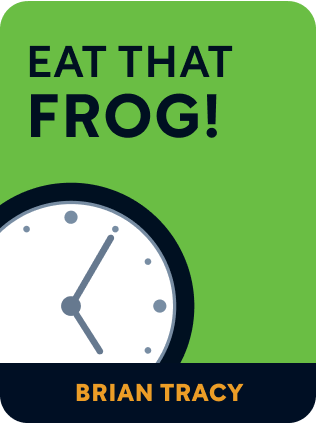

This article is an excerpt from the Shortform book guide to "Eat That Frog!" by Brian Tracy. Shortform has the world's best summaries and analyses of books you should be reading.
Like this article? Sign up for a free trial here .
How can the simple act of writing a list help you save time? How can you create a plan every day and manage your time more efficiently?
Taking 10 minutes to create a plan can save as much as two hours in wasted time and unfocused effort during your day. This is because working from a list increases your productivity by 25%.
Keep reading to learn how you can create a plan and manage your time better.
Create a Plan and Save Time
At work, you should try to get the maximum return on your investment of energy and time. The way to do this is to create a plan. A minute spent on planning could save you up to 10 minutes in implementation. This means taking 10 minutes to plan your day can save as much as two hours in wasted time and unfocused effort during your day.
Planning is so important that business and self-help books often quote the “Six-P” adage: Proper Prior Planning Prevents Poor Performance.
Although planning your day increases your productivity and effectiveness, surprisingly few people do it, perhaps because it seems difficult. But in reality, it’s simple to create a plan: On a sheet of paper, list everything you have to do.
Gain Two Hours a Day
Always keep a list. Whenever something comes up, add it to the list. When you work from a list, you can increase your productivity by 25%—two hours a day.
Each night, make a list for the next day. Include leftovers—unfinished or undone tasks from the day before—and new tasks for the day. A benefit of making a list the night before is that your subconscious mind will mull over it while you sleep. You may wake up with ideas that help you with your tasks.
The more time you take to think and create a plan, the more effective you’ll be.
Create Multiple Lists
Effective planning requires lists for different timeframes—daily, weekly, monthly—plus a master list and separate project lists. You move items between lists as you constantly prioritize. Here are the basic lists:
- Master list: Your master list contains everything you want to do at some point. Every time you get an idea or a new task comes up, put it on this list.
- Monthly list: Compile this list near the end of the month, for the upcoming month. Move items to it from your master list, and add anything else you know of for the month.
- Weekly list: Use this list to plan the next week. Build it as things come up during the current week.
- Daily list: List specific tasks you’re going to complete that day. Move items from your monthly and weekly lists to your daily list. Throughout the day, check off items as you do them to visually show your accomplishments, create a sense of momentum, and motivate you.
Working from lists will make you feel confident that you’re on top of things and not forgetting anything.
Create a Plan for a Project
When you have a project or task to do, start by making a list of each step required for completing it. Organize the steps by priority and by when they need to be completed. Use project-planning software or a sheet of paper to display the tasks so you can see every step. Implement it step by step.
Planning a project in advance will greatly reduce the amount of time and effort required to accomplish it. The 10/90 rule of planning states: Spending 10% of your time on a task planning it will reduce the time required to complete it by 90%.
In addition, create a plan for your day, it’s easier to get started and keep going.

———End of Preview———
Like what you just read? Read the rest of the world's best book summary and analysis of Brian Tracy's "Eat That Frog!" at Shortform .
Here's what you'll find in our full Eat That Frog! summary :
- What it means to eat a frog
- How your daily distractions get in the way of doing important work first
- How to make a habit of doing the most important thing first, every day






